‘Alex Wagner Tonight’ stretches imagery to form laser line-like effects
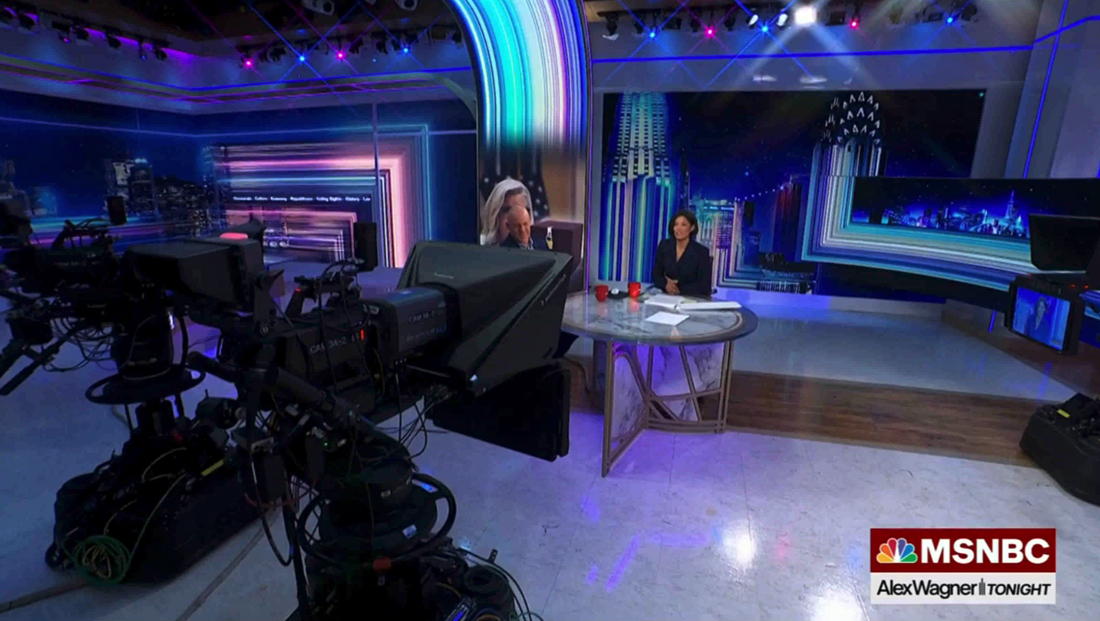
Subscribe to NCS for the latest news, project case studies and product announcements in broadcast technology, creative design and engineering delivered to your inbox.
MSNBC’s Tuesday through Friday replacement for “The Rachel Maddow Show” got off to a bit of a bumpy start Tuesday, Aug. 16, 2022 thanks to those good old “technical gremlins” but still managed to showcase its distinct look that blends stretched elements that feel a bit like laser lights or light bursts along with city imagery.
“Alex Wagner Tonight,” anchored by Alex Wagner, started off with a cross-studio toss from “All In” anchor Chris Hayes sitting on one side of Studio 3A to Wagner, whose home base was over closer to the sliding wall and curved LED ribbon.
‘#AlexWagnerTonight’ had a bit of a rough start, @alexwagner acknowledged on air last night. #MSNBC declined to comment other than referring to Wagner’s on-air comments at the end of the A block. We’ll hold off on covering until tomorrow; hopefully Day 2 will be better.
— NewscastStudio (@NewscastStudio) August 17, 2022
After the toss, Wagner began reading a tease and it quickly became apparent something wasn’t quite right.
MSNBC declined to comment on what exactly went wrong, but it appears there may have been an issue with the prompter, given how Wagner’s eyes started darting.
After some odd hand gestures, perhaps meant to communicate to the control room the prompter wasn’t showing the correct copy or indicating she was confused as to which direction the show was headed, she also bailed out of what was presumably supposed to be a multi-story tease, pivoting fairly cleanly to go right to the top story she had just teased, which could have been indicative of a graphics or playback issue.
Wagner would address the issue later in the show.
“And one note before we go to break. Yes, we sure did have a case of the technical gremlins at the top of the show, but this is the first one so we’ll work it out. Now I think we’ve gotten it all under control. We hope the rest of the night will be smooth sailing America, but this is live TV and it has its charms. We’ll be back,” she said, according to MSNBC’s transcript.
The rest of the show appeared to get back on the rails and the second edition Aug. 17, 2022, didn’t have the issue with the tease segment.
As previewed, Wagner’s show uses a dark cityscape motif, often centered around Rockefeller Center imagery and sometimes entering the vaporwave genre.
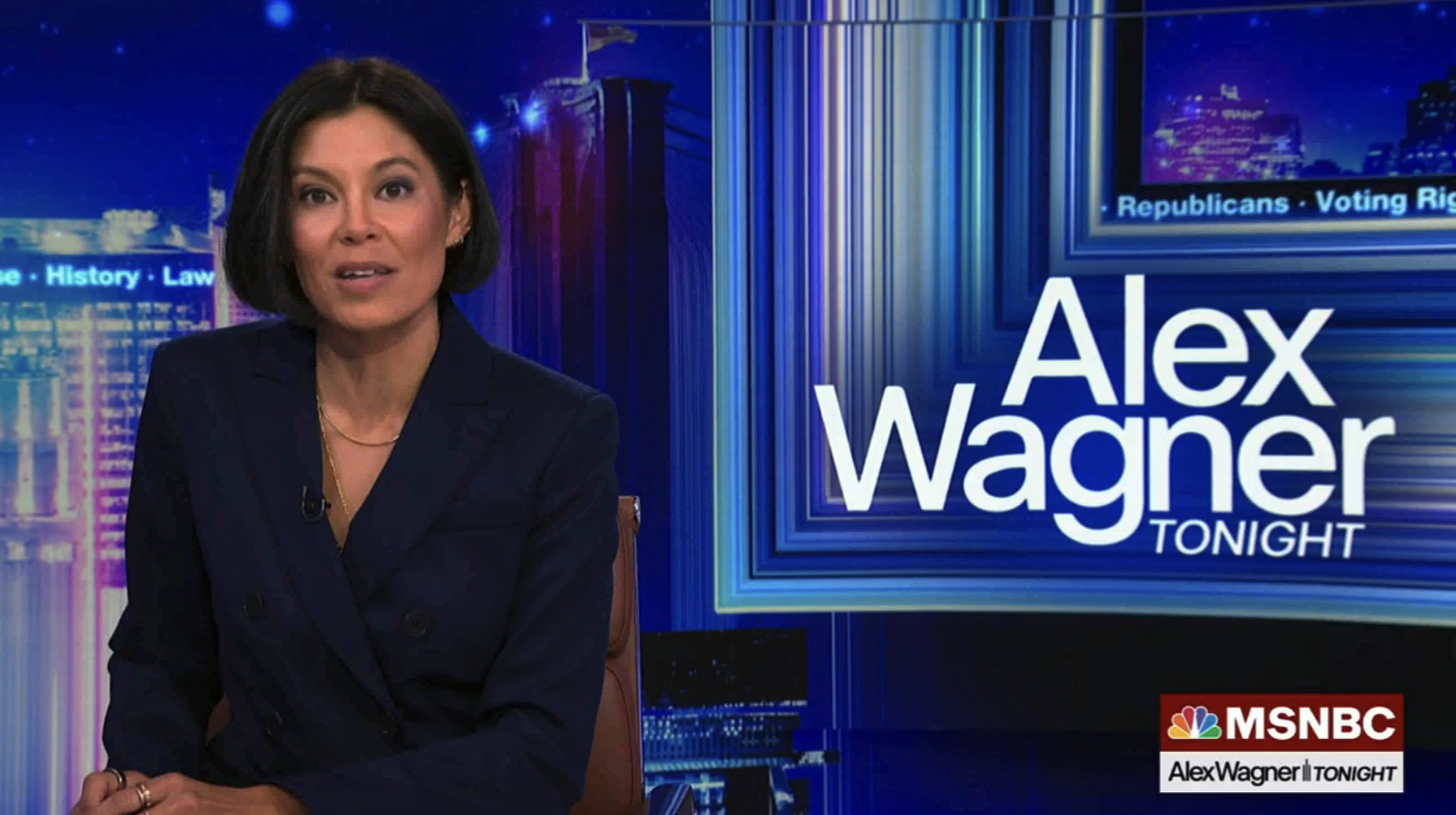
What’s unique, however, is that at key points in the layout, a few rows of pixels are taken and stretched out to form a sort of multi-threaded stream of light streaks (those familiar with Photoshop have likely accidentally discovered this effect when stretching a selection).
Taking this a step farther, select layouts also include a 90-degree turn for the blurs, creating an L-shaped look. In some cases in TV news graphics design, parts of the edges of photos are stretched in this way in order to make them fill the digital canvas, but they are typically then blurred or have a transparency effect applied to make the linear stretches less obvious.
A similar effect is used on typography in the show’s logotype, where the middle of it is stretched out via animation.
The show doesn’t feature a formal open, but there is a longer animation that’s used mid-show that could be viewed as a sort of rejoin or reopen.

The design starts with a blue starry sky and hint of Rock Center on the left with some laser lines, including three gold ones that shoot up from the bottom of the screen, forming a simplified version of 30 Rockefeller Center’s profile. This element, in black, is used as a pipe-like separator between Wagner’s name and the word “Tonight” in the small space in the network bug reserved for show branding.
The reopen animation then is followed by a series of upward pointing animated chevrons that switch to outline format when placed atop of an image of a corner of the building. The view then switches to a wide view of 30 Rock and nearby buildings before the stretch effect, with additional vertical colored laser lines appear near the bottom of the screen.
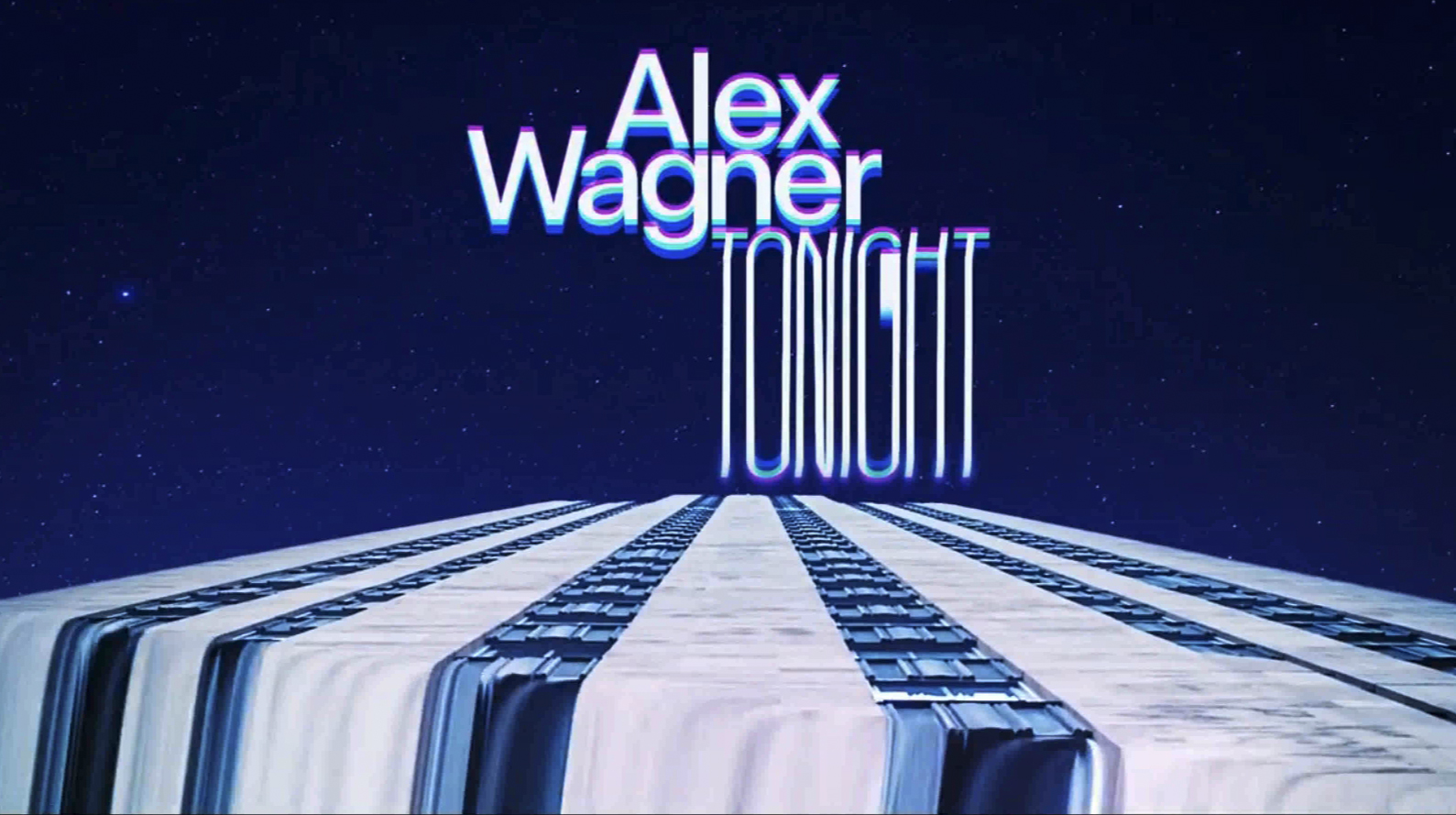
A separate bump animation features some of 30 Rock’s iconic carvings before shifting to a skyward facing view of the building’s facade with the show logo above and a stretched version of the lower portion of the building image occupying the bottom of the screen.
Another variation includes multiple angles of distorted elements.

“Alex Wagner” uses the same lower third designs as most other MSNBC shows, including the red color scheme during breaking news. During normal coverage, the gray banners are framed out with blue.

The show is also full of bursts of animation using the bright line idea, including as a fullscreen wipe and also shown to transition between graphics on the video wall and ribbon behind home base.
MSNBC built a new desk for Wagner, a circular table with faux stone top and a three-panel based with curved lines running in multiple directions, including one that suggests a peacock’s feather. Select portions of the design are filled with faux stone as well.
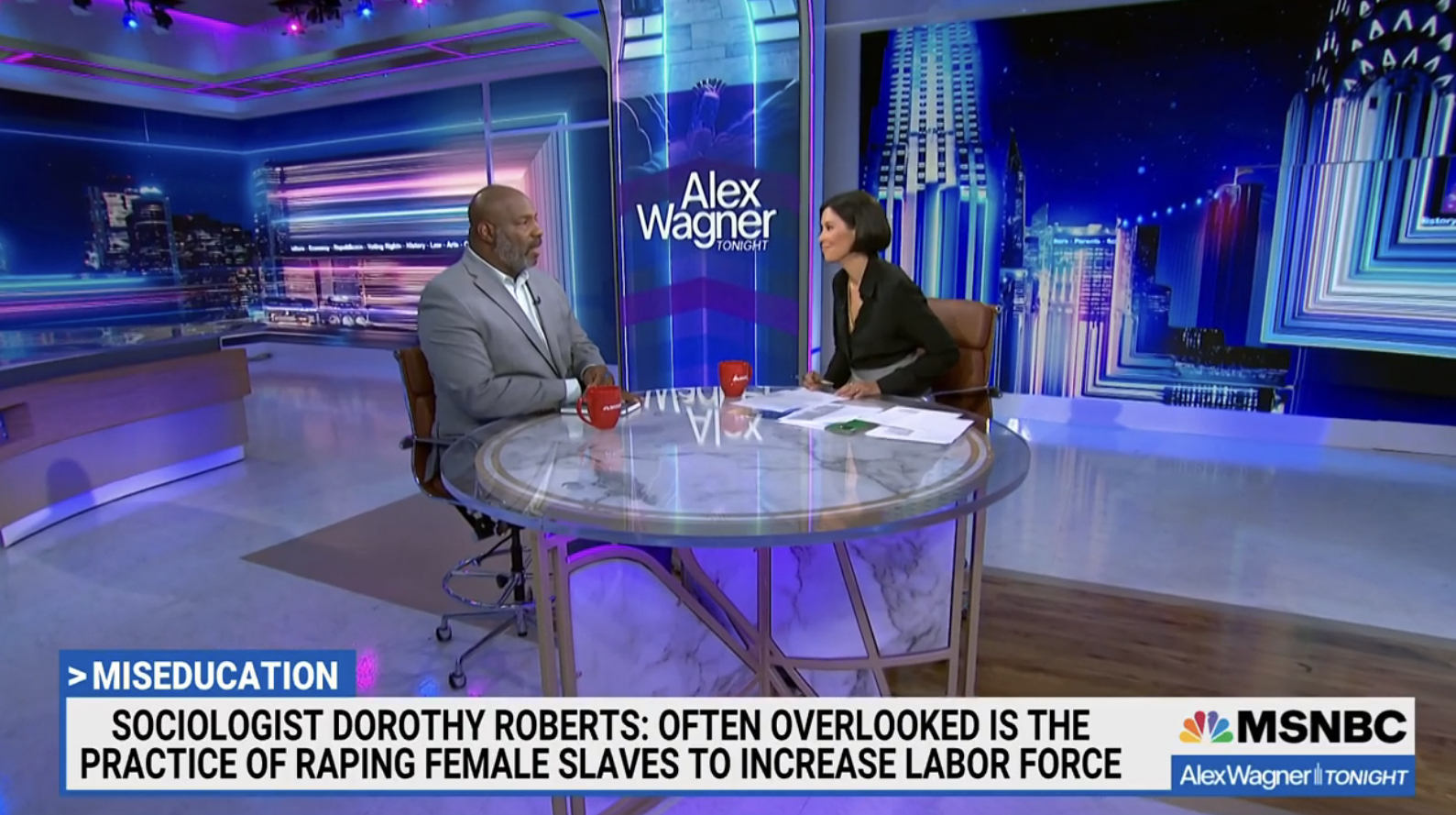
When it’s just Wagner on camera, she’s typically shown with a branded background behind her with a row of text scrolling by near the top of the one of the buildings over her shoulder.
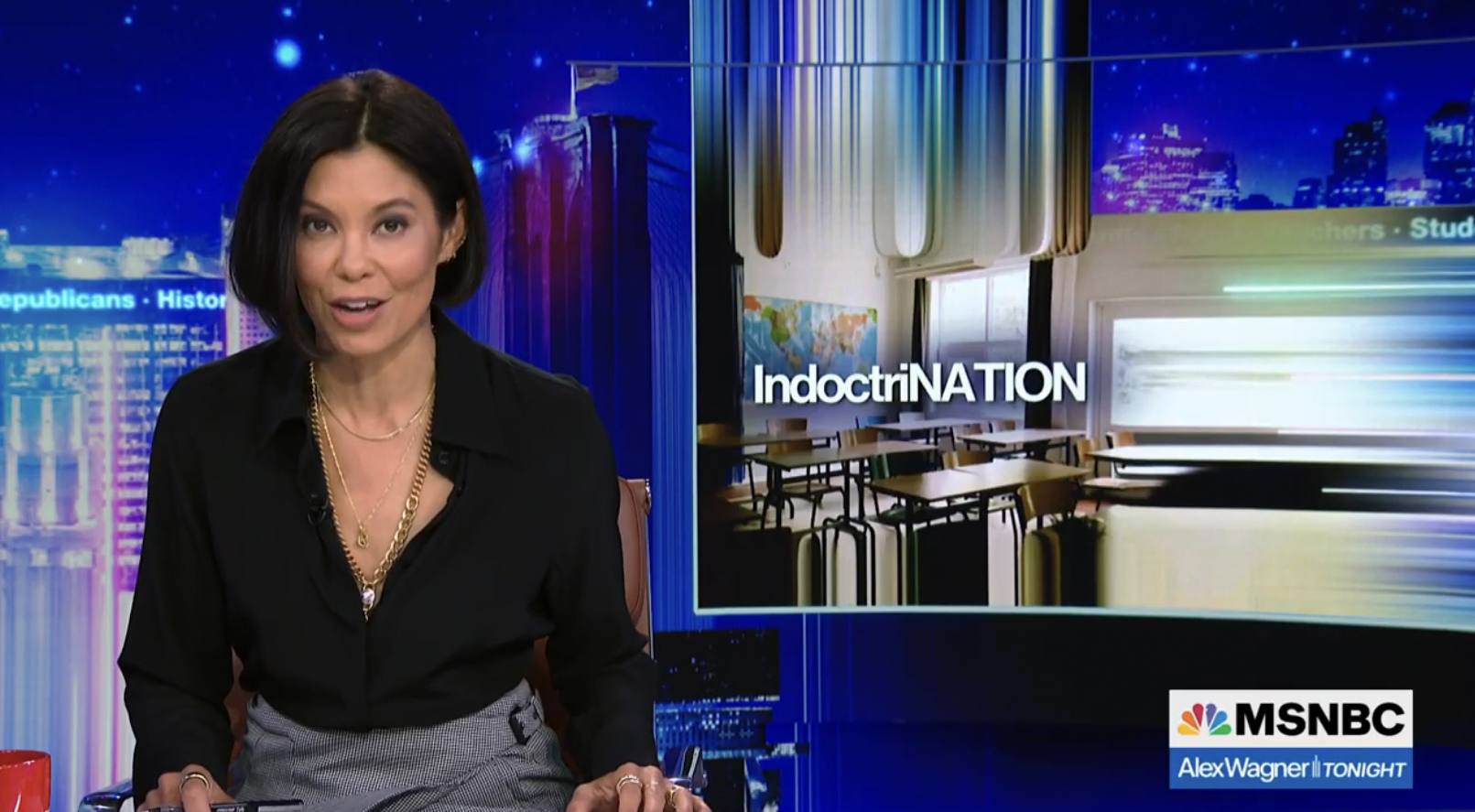
These words typically are related to the story, but it also appears there are generic ones available for use, for example, during teases.
An OTS-style graphic is inserted into the first hint of the curved LED portion behind her, an element sometimes known as the “Kornacki curve.”
It’s typically framed out with a solid line and then has elements from both the top of the image and far right side stretched out going in perpendicular directions, creating a sort of “frame” for the layout.
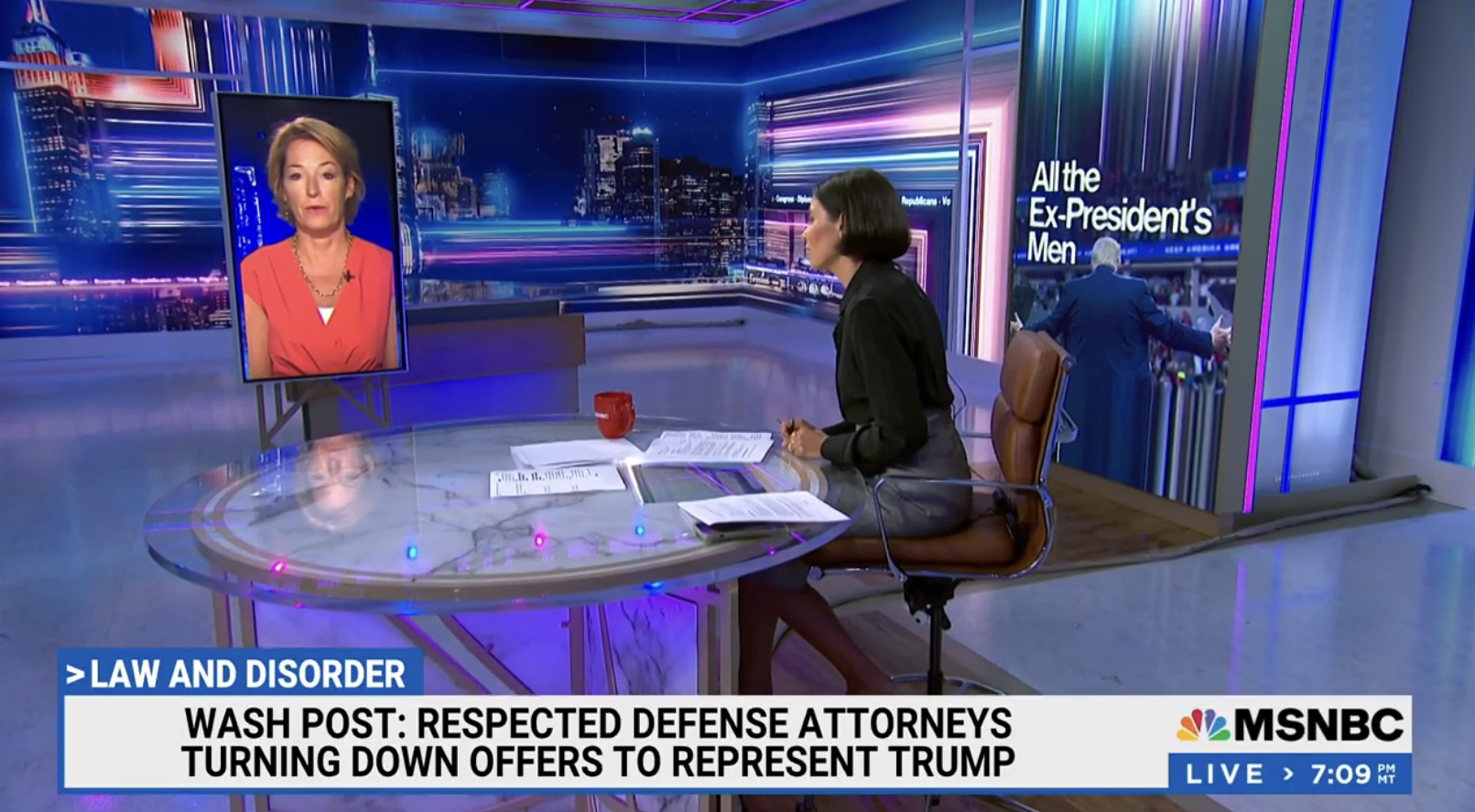
For remote guests, the network added a new freestanding vertical LED Panel with a based that mirrors the desk’s that’s place camera left of Wagner.
Wide views of Wagner and the panel typically show the large seamless LED video wall corner installed on the opposite end of the studio, along with the studio’s wedge-shaped desk parked in the background (part of the seamless video wall in the corner can roll aside to reveal storage for the myriad of desks, chairs, risers and other scenic pieces that MSNBC has for the space).
For in-studio interviews, guests typically sit in a similar position, requiring the corner LED walls to show up behind them. These guests are often shot at a slightly different angle so that the lower portion of the seamless LED archway that extends from one side of the space to the other shows a different version of the OTS graphics shown on the curve.
The upper portions of this scenic element is typically filled with a bright, colorful expanse of blurred lines.
In both cases, the corner LED video walls are filled with a large graphic that blends city views, horizontal and vertical light blurs in blues and pinks and repeating tickers of text.
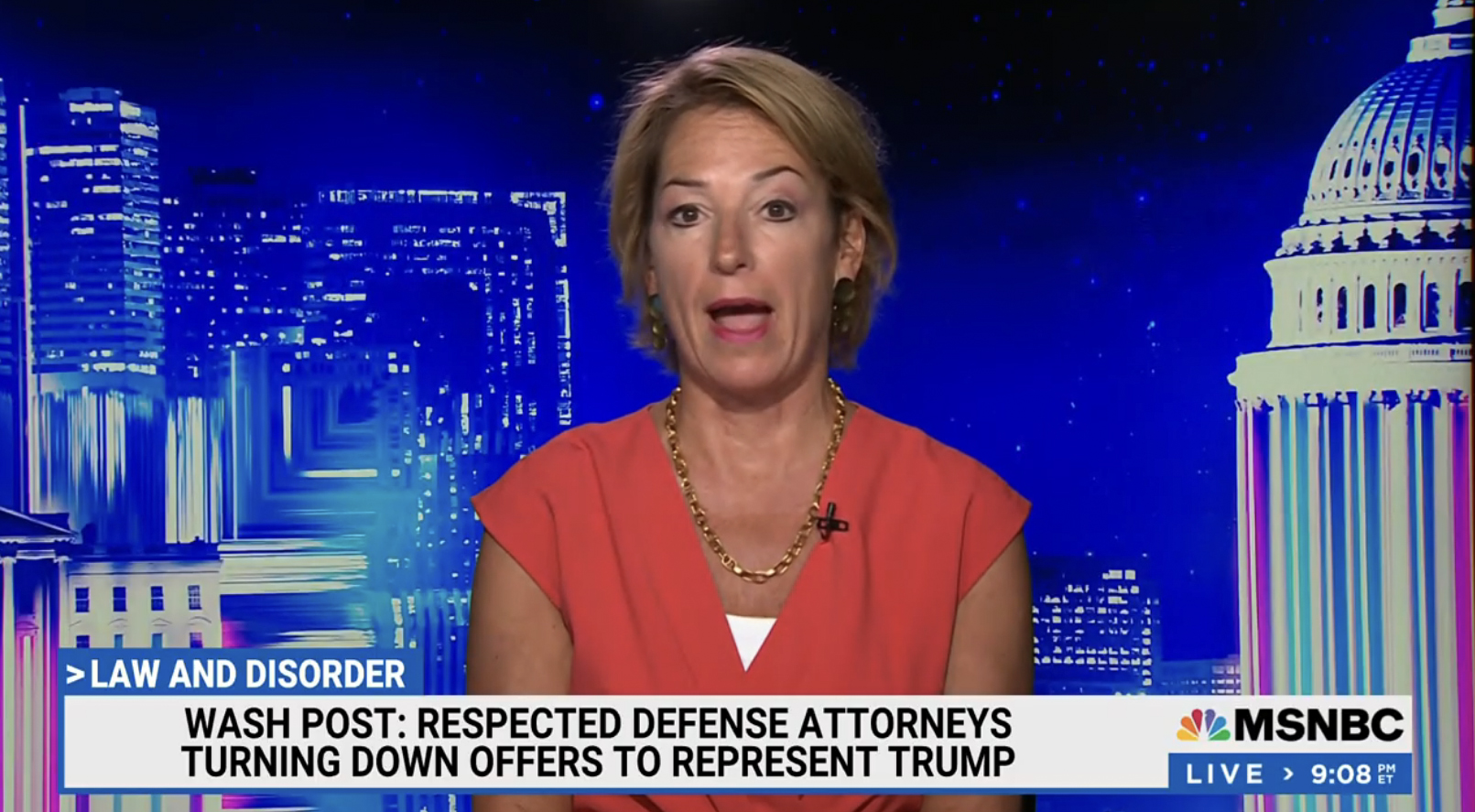
In many cases, remote guests sit in front of a graphic that depicts the city they are originating from using similar stretch and distortion effects.
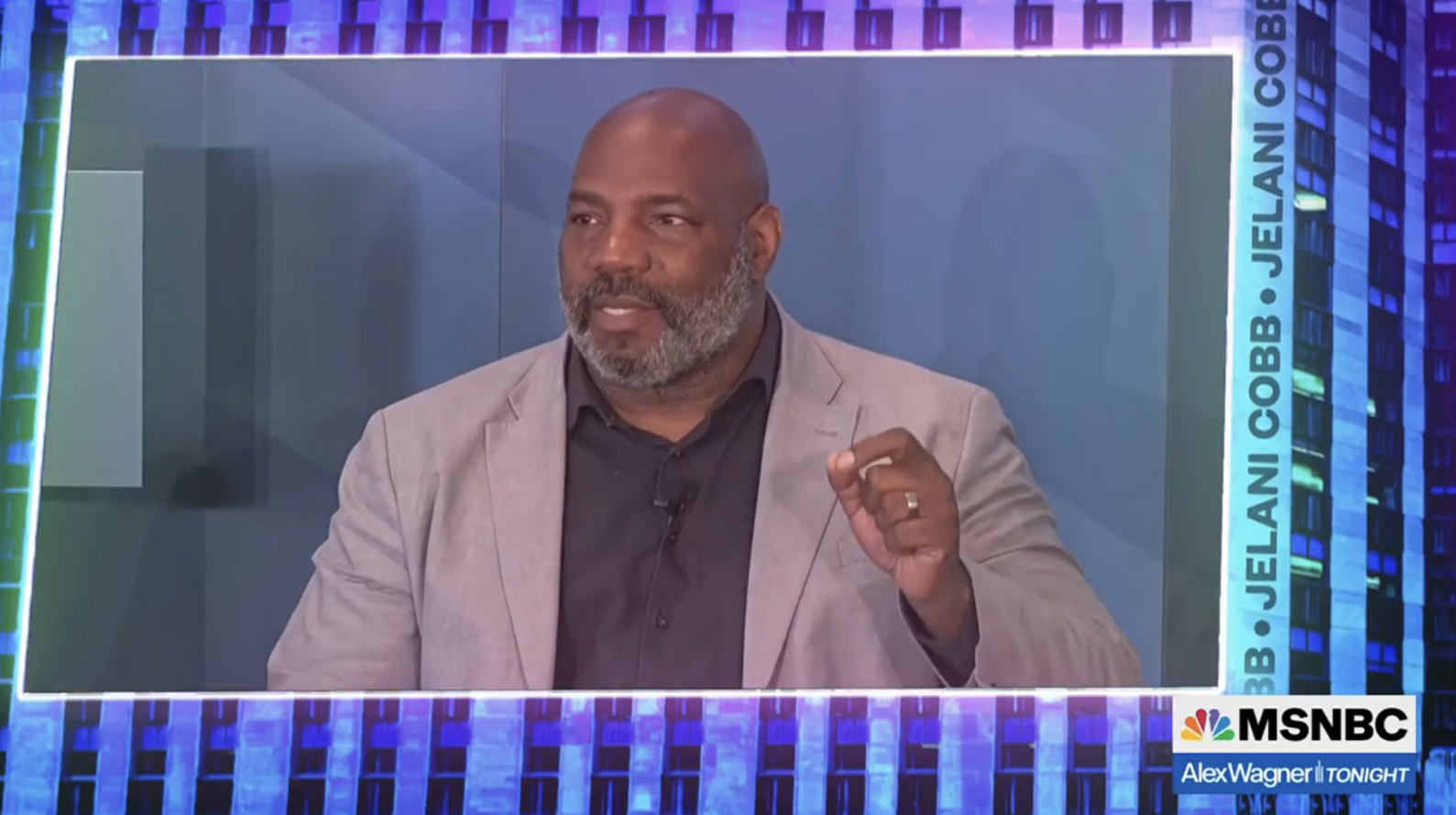
When heading to breaks, Wagner can talk over a fullscreen graphic that appears to insert video clips on the side of a building, while a vertically scrolling line of text is inserted on the right side of the frame to highlight the next topic or guest.

Subscribe to NCS for the latest news, project case studies and product announcements in broadcast technology, creative design and engineering delivered to your inbox.






tags
30 Rockefeller Plaza, Alex Wagner Tonight, MSNBC, the rachel maddow show
categories
Branding, Broadcast Design, Broadcast Industry News, Cable News, Graphics, Heroes, TV News Graphics Package, Video Walls